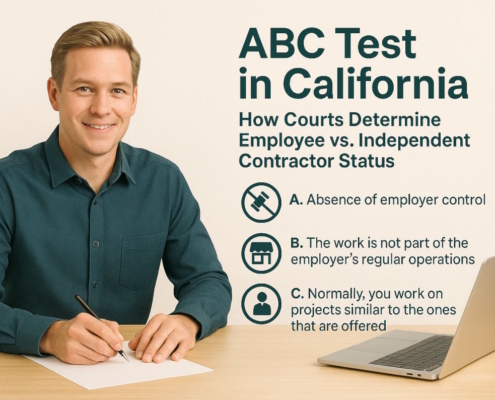For one, they may put a cap on vacation build-up. This means that employees cannot endlessly accrue vacation time in the hope of going on a month-long vacation. At some set point, they will have to use earned vacation days in order to earn more.
Employers are also allowed to make new employees wait for a certain period prior to earning vacation leave. This is known as a waiting period. Depending on the job, this may last for as little as a few weeks, or can stretch to a year.
Employers may also assign different vacation policies to certain groups, such as managers are full-time employees. They may do so as long as they don’t discriminate based on a protected class, such as age, race, gender, or disability.
It is possible for employers to change their vacation policies at any time, including getting rid of them. However, they must not take away already-earned vacation time and must pay out employees who are terminated with unused leave.
If an employer gives an employee vacation leave in advance, he or she cannot deduct it from a final paycheck if the employee leaves earlier than expected. Once it is granted, or earned, it cannot be taken away.
Example:
Laura works at Versace and has one week of earned vacation time. When she makes plans to visit Aruba, she asks her manager if she can take another week of vacation in advance. Her manager agrees, and Laura takes her two-week tropical vacation. When she returns to work, she suddenly quits, having gotten a job at Gucci. Laura’s boss deducts the advanced week of vacation time from Laura’s final paycheck. This is illegal. By advancing Laura a week of vacation, that vacation time has become “earned.” The manager is not allowed to deduct it from Laura’s final paycheck, and Laura has grounds to sue.
It is often wondered whether employers can ever force employees to take vacation time. It depends.
If an employee is taking another leave of absence, such as those offered under the Family and Medical Leave Act (FMLA), the California Family Rights Act (CFRA), or Paid Family Leave, the employer can require that the employee use his or her vacation time concurrently (at the same time).
For other types of leave than those listed above, employers are not allowed to force employees to take their vacation leave at the same time.
Example:
Loren is 30 weeks pregnant with her first child and has recently developed complications. Her doctor has prescribed bed rest and has advised Loren not to work for fear of aggravating her condition. Loren qualifies for pregnancy disability leave, and she tells her employer that she will be taking time off until she is better. Her employer wants Loren to use her earned vacation time while away from work. However, the employer cannot force Loren to take her vacation time, because pregnancy disability leave is protected. An employer cannot force employees to use vacation during this type of leave.






















